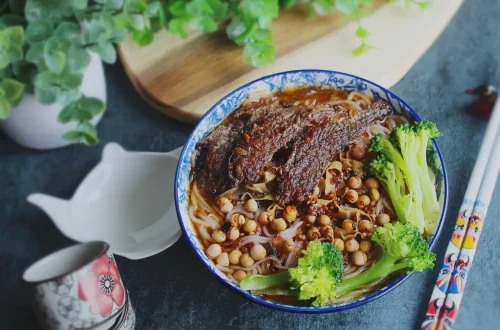
Essential Feeders for Ground Feeding Birds: Attracting Nature’s Beauties
Birdwatching and feeding wild birds can be a rewarding experience, offering a unique opportunity to connect with nature right in your backyard. Ground-feeding birds, such as sparrows, doves, and juncos, are particularly delightful to observe as they scavenge for seeds and insects on the ground. These birds can add both beauty and vibrancy to any garden or outdoor space. To attract these feathered visitors, it’s essential to provide them with the right feeders and food that cater to their feeding habits.
Unlike their counterparts that prefer elevated feeders, ground-feeding birds tend to forage on the ground, making it crucial to create an inviting environment that mimics their natural habitat. This involves not only choosing the right type of food but also understanding the various feeders that can best serve these species. By doing so, you can create a feeding station that encourages a diverse range of ground-feeding birds to visit, providing an enriching experience for both you and them.
As you embark on this journey of attracting ground-feeding birds, remember that patience and consistency are key. It may take some time for the birds to discover your offerings, but with the right approach, your outdoor space can become a haven for these beautiful creatures. Let’s explore the essential feeders and strategies that will help you attract and nurture these lovely visitors.
Understanding Ground-Feeding Birds
Ground-feeding birds are a diverse group that includes various species known for their foraging habits close to the earth. Understanding their behavior is crucial for successfully attracting them to your garden. These birds typically feed on seeds, grains, and insects found on the ground, making them distinct from those that prefer hanging or platform feeders.
Sparrows are among the most common ground-feeding birds. They often prefer mixed grain blends and will thrive in an environment where they can scavenge freely. Doves, too, are regular visitors, usually opting for sunflower seeds or millet. Juncos, another popular ground feeder, love to dine on seeds and grains, particularly in colder months when food becomes scarce.
Creating a welcoming environment for these birds involves understanding their preferences. For instance, ground-feeding birds often feel more secure when they have nearby cover, such as shrubs or low vegetation, to hide from predators. Incorporating native plants into your garden can provide this necessary shelter while also attracting insects that many of these birds rely on for additional nutrition.
Moreover, the time of year plays a significant role in the feeding habits of ground-feeding birds. During the fall and winter months, they may require higher caloric intake to maintain their energy levels in colder temperatures. Providing high-energy food sources, such as fat-rich seeds and suet, can help them survive the harsh conditions.
Understanding these aspects of ground-feeding birds not only enhances your ability to attract them but also enriches your overall birdwatching experience. Observing their behavior and interactions can provide incredible insights into their lives, making your outdoor space a vibrant ecosystem of avian activity.
Choosing the Right Feeders for Ground Feeders
Selecting the appropriate feeders is critical for attracting ground-feeding birds to your yard. Unlike more traditional bird feeders that hang from trees or poles, ground feeders are designed specifically for birds that prefer to eat from the ground. These feeders come in various styles, each catering to different species and feeding behaviors.
One popular option is the platform feeder, which offers a flat surface for birds to gather and feed. These feeders can be placed directly on the ground or elevated slightly to deter larger animals. Platform feeders are versatile and can accommodate a variety of bird species, making them an excellent choice for attracting multiple types of ground feeders.
Another effective type of feeder is the ground tray feeder. These feeders are shallow and open, allowing birds to access the food easily. You can fill them with a mix of seeds, grains, or even kitchen scraps like bread or fruits, providing a diverse diet that will attract various ground-feeding species. The key is to keep these feeders clean and regularly stocked, as birds are more likely to return if they find a reliable source of food.
When setting up your feeders, consider their location carefully. Ground feeders should be placed in areas that are easily visible to birds, preferably near natural cover like bushes or trees. This allows birds to feel secure while feeding, especially in open spaces where they may be vulnerable to predators.
In addition to traditional feeders, creating a bird-friendly environment can further enhance your chances of attracting ground feeders. Leaving parts of your garden untended, allowing natural seeds to sprout, and providing a mix of food sources can create a more inviting habitat. Water sources, such as birdbaths, are also essential, as they offer birds a place to drink and bathe, making your yard a complete sanctuary for wildlife.
Types of Food to Attract Ground-Feeding Birds
The type of food you provide for ground-feeding birds plays a significant role in attracting them to your yard. These birds have specific dietary preferences, so offering a variety of suitable foods will increase your chances of drawing them in.
Seeds are a staple for many ground-feeding birds. Sunflower seeds are particularly popular due to their high oil content and nutritional value. You can offer both black oil sunflower seeds, which are preferred by many species, and striped sunflower seeds. Millet is another excellent choice, especially for sparrows and juncos. Providing a seed mix that includes these options ensures that you cater to a wide range of species.
In addition to seeds, many ground feeders enjoy grains such as cracked corn or oats. These can be scattered directly on the ground or placed in feeders designed for ground use. Cracked corn is especially appealing during colder months, as it provides high-energy content that birds need for warmth.
Fruits and vegetables can also attract ground-feeding birds. Offer overripe fruits like apples, pears, or berries, which can entice birds looking for a sweet treat. Additionally, kitchen scraps such as bread crusts or vegetable peelings can be beneficial. However, ensure that the food is safe and free from mold, as spoiled food can harm birds.
Suet is another excellent food option, particularly in winter. Suet cakes can be placed on ground feeders or platform feeders, providing birds with a high-energy food source that is especially important during cold weather. Many ground-feeding birds will readily eat suet, and it’s a great way to attract species that may not typically visit seed feeders.
By offering a diverse diet that includes seeds, grains, fruits, and suet, you can create an inviting atmosphere for ground-feeding birds throughout the year. Regularly replenishing food sources will keep birds returning, allowing you to enjoy their presence and observe their behaviors.
Creating a Bird-Friendly Habitat
Beyond feeders and food, creating a bird-friendly habitat is essential for attracting and retaining ground-feeding birds in your yard. A well-designed environment not only provides the necessary resources but also promotes the overall health and safety of visiting birds.
Start by incorporating native plants into your garden. Native flora is adapted to your local environment and provides natural food sources, such as seeds, fruits, and insects, for birds. Additionally, these plants can offer cover and nesting sites, which are crucial for the survival of many bird species. By creating a rich landscape of native plants, you’ll support local wildlife and enhance the beauty of your outdoor space.
Consider adding features that provide shelter and safety. Low shrubs, brush piles, and rock formations can create hiding spots for birds, allowing them to escape from predators while feeding. It’s also important to avoid using pesticides and harmful chemicals, as these can harm birds directly or reduce their food supply by killing off insects.
Another aspect to consider is water availability. Ground-feeding birds require water for drinking and bathing, so providing a clean birdbath or shallow water source is essential. Ensure that the water is fresh and regularly changed to prevent algae growth and attract birds consistently. Adding a small fountain or dripper can create movement in the water, which often entices birds to visit more frequently.
Finally, maintaining a quiet and peaceful environment is vital. Ground-feeding birds can be skittish, so minimizing disturbances will encourage them to feel safe while foraging. Limiting pet access to feeding areas and avoiding loud noises can make a significant difference in how comfortable these birds feel in your yard.
By creating a welcoming and safe habitat, you can foster a thriving community of ground-feeding birds, enriching your outdoor experience and contributing to local biodiversity. With the right feeders, food, and environment, your yard can become a sanctuary for these beautiful creatures.
In conclusion, attracting ground-feeding birds requires an understanding of their habits, the right type of feeders, and the appropriate food sources. By creating a bird-friendly habitat that includes native plants, water sources, and shelter, you can enhance your chances of drawing these lovely visitors into your garden. With patience and care, you will not only witness the beauty of nature but also play an essential role in supporting local wildlife. Enjoy the vibrant interactions and the joy that comes from nurturing the avian wonders of your backyard.




